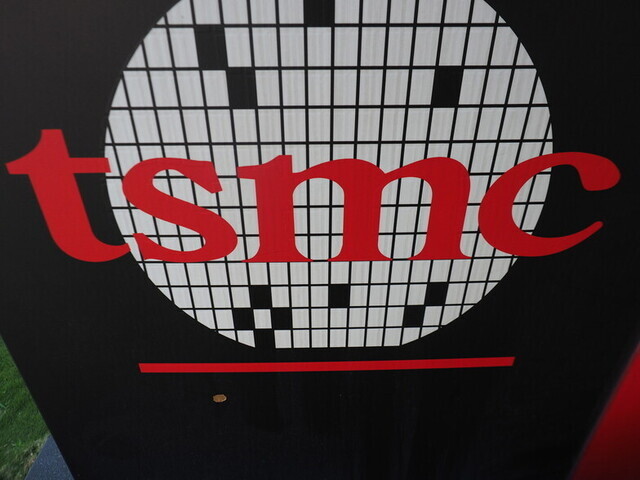hankyoreh
Links to other country sites 다른 나라 사이트 링크
S. Korea drops to No. 2 spot in Chinese import market due to Taiwanese semiconductors

According to recently published statistics, South Korea’s share in China’s import market was 8.0% as of 2021, ranking second only after Taiwan (9.4%). Korea ranked first in market share from 2013 to 2019, but fell to second place in 2020.
The figures were released on Wednesday by the Federation of Korean Industries (FKI) based on numbers from the Korea International Trade Association and China’s foreign trade statistics. Korea’s drop is mainly attributed to China’s increase in imports of Taiwanese semiconductors.
Compared to other countries’ market share in China’s import market, South Korea's decline was relatively fast. Korea’s share fell by 1 percentage point from 9.8% between 2012 and 2016 to 8.8% between 2017 and 2021. During the same period, the shares of six ASEAN countries — Malaysia, Thailand, Indonesia, Singapore, Vietnam and the Philippines — and Taiwan rose 2.5 points and 0.8 points, respectively.
The US figures, like Korea’s, fell by 1 point. Japan and Germany fell 0.5 and 0.3 points, respectively, while France rose by 0.1 points and the UK’s figures remained unchanged.
The FKI explains that “China's imports of semiconductors from Taiwan have increased since the US restricted exports of semiconductor technologies and equipment to China because they may be used by the Chinese military.”
In 2020, the US blacklisted SMIC, the largest semiconductor foundry in China, and effectively restricted the export of semiconductor technology and equipment by domestic companies to China.
Excluding memory semiconductors, South Korea’s largest export to China, Korea’s market share in China decreased by 2.0 points from 8.8% between 2012 and 2016 to 6.8% between 2017 and 2021. During the same period, the share of the six ASEAN countries increased by 2.8 points.
Moreover, Korea’s share in China’s components and materials import market decreased by 5.0 points from 16.9% in 2012-2016 to 11.9% in 2017-2021. The FKI explained that this was the result of China’s industrial and structural transformation and advancement policies, such as aiming for self-sufficiency in components and materials and the growth of domestic Chinese companies — all embodied by the "Made in China 2025” initiative.
South Korea's market share in China's top 10 imported consumer goods (as of 2018), including cars, medicines, cosmetics, and baby food, fell 1.2 points from 5.4% between 2012 and 2016 to 4.2% between 2017 and 2021.
During the same period, France's market share was able to increase by 2.3 points, but all other major countries (including the US, Japan, Germany, and the UK) and six ASEAN countries were unable to escape the decline in market share.
The rise in France’s market share stemmed from the fact that during that period, China’s imports of cosmetics from France rose from US$3.2 billion to US$12.07 billion, nearly fourfold.
By Kim Young-bae, senior staff writer
Please direct questions or comments to [english@hani.co.kr]

Editorial・opinion
![[Column] Park Geun-hye déjà vu in Yoon Suk-yeol [Column] Park Geun-hye déjà vu in Yoon Suk-yeol](https://flexible.img.hani.co.kr/flexible/normal/500/300/imgdb/original/2024/0424/651713945113788.jpg) [Column] Park Geun-hye déjà vu in Yoon Suk-yeol
[Column] Park Geun-hye déjà vu in Yoon Suk-yeol![[Editorial] New weight of N. Korea’s nuclear threats makes dialogue all the more urgent [Editorial] New weight of N. Korea’s nuclear threats makes dialogue all the more urgent](https://flexible.img.hani.co.kr/flexible/normal/500/300/imgdb/original/2024/0424/7317139454662664.jpg) [Editorial] New weight of N. Korea’s nuclear threats makes dialogue all the more urgent
[Editorial] New weight of N. Korea’s nuclear threats makes dialogue all the more urgent- [Guest essay] The real reason Korea’s new right wants to dub Rhee a founding father
- [Column] ‘Choson’: Is it time we start referring to N. Korea in its own terms?
- [Editorial] Japan’s rewriting of history with Korea has gone too far
- [Column] The president’s questionable capacity for dialogue
- [Column] Are chaebol firms just pizza pies for families to divvy up as they please?
- [Column] Has Korea, too, crossed the Rubicon on China?
- [Correspondent’s column] In Japan’s alliance with US, echoes of its past alliances with UK
- [Editorial] Does Yoon think the Korean public is wrong?
Most viewed articles
- 1‘We must say no’: Seoul defense chief on Korean, USFK involvement in hypothetical Taiwan crisis
- 2N. Korean delegation’s trip to Iran shows how Pyongyang is leveraging ties with Moscow
- 346% of cases of violence against women in Korea perpetrated by intimate partner, study finds
- 4Amnesty notes ‘erosion’ of freedom of expression in Korea in annual human rights report
- 5‘Weddingflation’ breaks the bank for Korean couples-to-be
- 6[Column] Park Geun-hye déjà vu in Yoon Suk-yeol
- 7Will NewJeans end up collateral damage in internal feud at K-pop juggernaut Hybe?
- 8Korea sees more deaths than births for 52nd consecutive month in February
- 9“Parental care contracts” increasingly common in South Korea
- 10[Interview] Dear Korean men, It’s OK to admit you’re not always strong